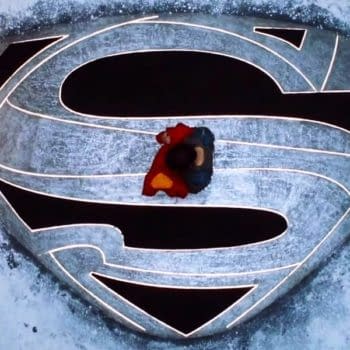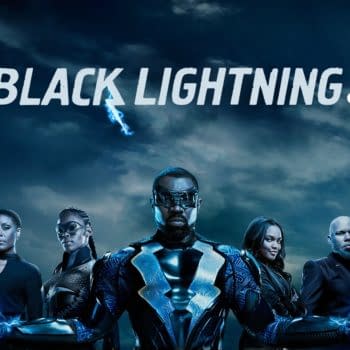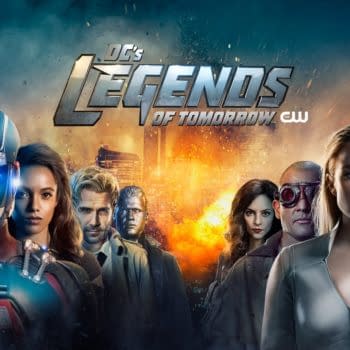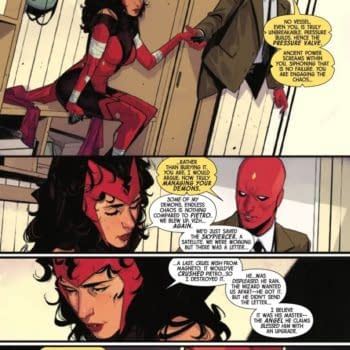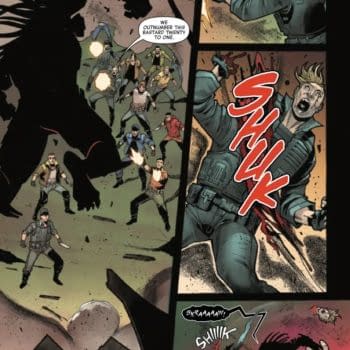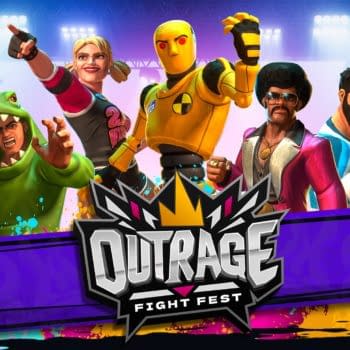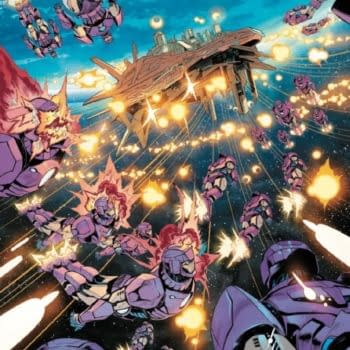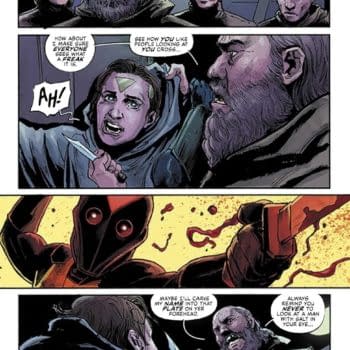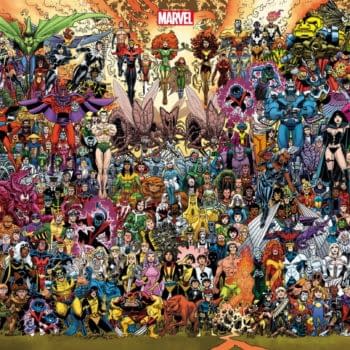Posted in: Comics | Tagged: Brandon Sanderson, Comics, Cosmere Universe, dynamite, entertainment, HRL, Mistborn, White Sand
White Sand: Brandon Sanderson Brings The Cosmere To Comics
About two years ago, my friend Ashley told me about a book series called Mistborn by an author named Brandon Sanderson. I listened to the book and loved how he crafted the world and described the way his character's special abilities worked. It was a detail you'd normally only get in comics.
Along with Mistborn series, the Stormlight Archive make up what is known as the Cosmere Universe, which also includes the graphic novel series White Sand. Originally written as a prose novel, Sanderson is adapting it with writer Rik Hoskin and artist Julius Gopez for Dynamite Entertainment. I got to talk with Sanderson about his decision to do White Sand as a comic and the story of Kenton, the last of the Sand Masters.
DAN WICKLINE: White Sand is part of your Cosmere universe. What made it the right property to take into the comic medium as opposed to the prose format you usually go with? Was there something about this that made it more geared towards the visual medium?
BRANDON SANDERSON: The magic is very visual. If we take something like Mistborn, the magic is mostly taking place in the head of the person practicing it — and we've had a tough time deciding how we'd show it all in a visual medium. But Sand Mastery is perfect. Glowing streams of sand, whipping about, being controlled by the Sand Master's mind. It looks great on the page.
I did write a White Sand prose novel, but I felt the novel wasn't ready to be published primarily because it needed a large trimming. I put off doing a revision for years, then realized that a natural process of creating a graphic novel would be to trim it mostly down to the dialogue — and let the pictures do the descriptions.
As this was what I wanted to do to the novel anyway, it felt like a perfect fit.
DW: One of the things I really admire about your work is how you explain the abilities of your heroes — whether it's the metal based abilities in Mistborn or the arcane abilities to control sand here. How do you go about creating how the powers work, and how important is it to the overall scheme of your writing process?
BS: Thank you!
I've carved a little niche out for myself in the fantasy genre by focusing on this kind of thing. It's certainly not the only way to tell a good story, but it has become "my" thing. Fantasy has a real challenge in what we call the "learning curve." We readers of the genre love that a good fantasy challenges us to learn a new world, with new rules, but if those rules go too far and get too plentiful, it just all kind of falls apart.
So there's a sweet spot — finding rules that make sense, and are easy to "get" and remember, but at the same time are interesting and innovative to scratch that "discover something new" itch that drives us to read fantasy at the same time. Overshadowing all that is the need to make sure the story isn't about the rules, but about the people those rules affect. The magic is generally only as interesting as the people who are using it.
So I'd say it's very important for me to get that balance down. Often, the thing that drives me to write a book is an instinct for how all of that is going to work.
DW: In White Sand we follow Kenton, who believes he is the last of the Sand Masters and who is really only coming into his abilities. What about him made his story interesting to you, and how is he unique among your protagonists?
BS: The driving idea for me in writing Kenton was this concept of, "The weakest mage at wizard school is suddenly the only one left." I had come off of writing novels about people who were extremely talented with their magic (and many of those are my most famous books.) I wanted, instead, to do a story about someone who was very weak in the magic — at least by standard definitions — and tell a story about what happens when that person suddenly needs to be the protagonist.
The other big theme that goes hand-in-hand with this (and which made me want to write Kenton's story) is the theme of finesse vs raw power. I wanted to explore a magic where a lot of skill could overcome a lot of brute strength — and Kenton coming to understand how his magic worked proved to be the perfect vehicle for doing this.
DW: How are you liking the creation process of doing comics? How does it change your creative process when working with a co-writer and artist as opposed to the ideas going from your imagination straight to the typed page?
BS: It's certainly different! But I'm liking it a lot. It is actually very similar to getting cover art for a novel. Often, I will send in a big description (or a chunk of book in this case) and wait to see what comes back. As a reminder, I've done White Sand as an actual prose novel, and am using a collaborator (Rik, who is an awesome writer) to edit it for the graphic novel.
I like letting people who are experts do what they do well —and not getting in their way too much. So I'm eager to get back what Rik or the artists send me — and it's never quite how I imagined it, but I love seeing their interpretation, and enjoy that as part of the process. Just like, as I mentioned, getting back the cover art of the book. Often, what I get back changes my view of the whole thing in great ways.
DW: You have a large fan base through your novels, many of whom may have not ever read a comic. Why should your readers pick up White Sand, even if they aren't comic readers?
BS: Two reasons. First, it's just as awesome as the books you've read — so I think you'll absolutely enjoy it.
But second, hopefully it can introduce you to the world of comics and graphic novels. As a long-time fan of these mediums, I'm always impressed by the things they can do that a prose novel just can't. There's so much richness to the storytelling method, which provides a similar but different experience. It's certainly worth trying!
* * * * *
White Sand Vol. 1 is available now in comic shops everywhere. Vol. 2 will be out by the end of the year.
I reviewed White Sand. Vol 1 just before Christmas last year.






